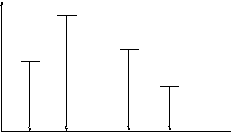

 1
2
3
4
5
6
7
8
9
10
11
12
13
14
15
16
17
18
19
20
21
22
23
24
25
26
1
2
3
4
5
6
7
8
9
10
11
12
13
14
15
16
17
18
19
20
21
22
23
24
25
26



between single and double bonds.
![]() typically 1.54 Å
typically 1.54 Å
bonds are of equal length:![]() 1.39Å.
1.39Å.
resonance hybrid of all these structures.
when contributing ![]() forms
forms ![]() have
have ![]() similar
similar ![]() energy
energy ![]() contents
contents ![]() resonance
resonance ![]() becomes
becomes
important.
resonance hybrid is more stable than any of the contributing structures.